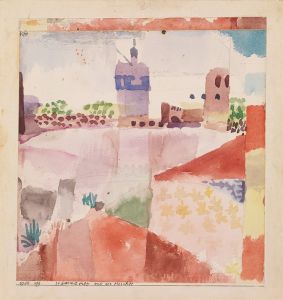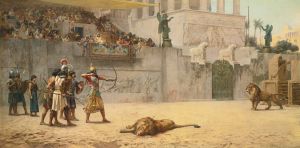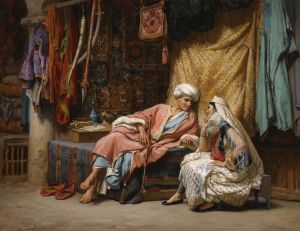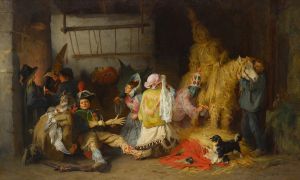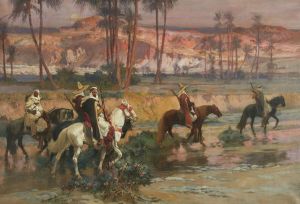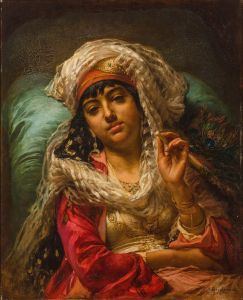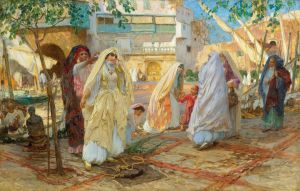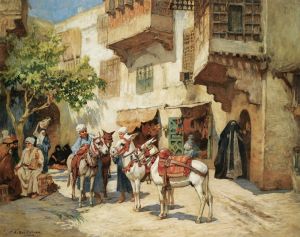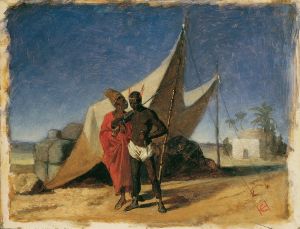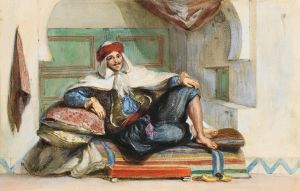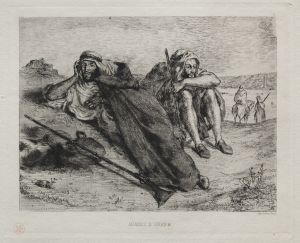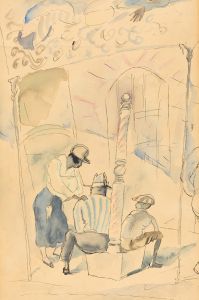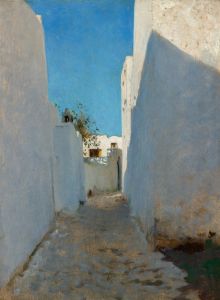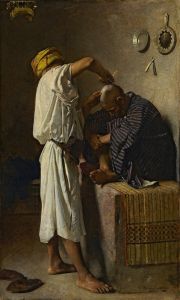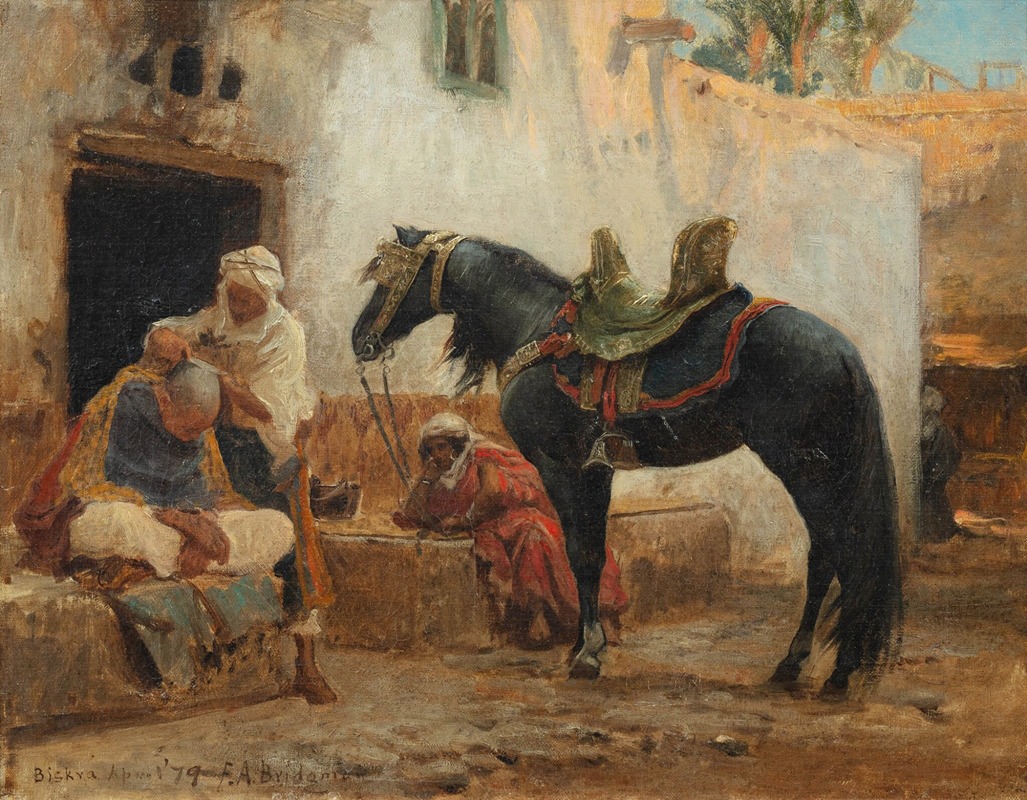
Barber of Biskra
A hand-painted replica of Frederick Arthur Bridgman’s masterpiece Barber of Biskra, meticulously crafted by professional artists to capture the true essence of the original. Each piece is created with museum-quality canvas and rare mineral pigments, carefully painted by experienced artists with delicate brushstrokes and rich, layered colors to perfectly recreate the texture of the original artwork. Unlike machine-printed reproductions, this hand-painted version brings the painting to life, infused with the artist’s emotions and skill in every stroke. Whether for personal collection or home decoration, it instantly elevates the artistic atmosphere of any space.
Frederick Arthur Bridgman was an American artist known for his Orientalist paintings, which depicted scenes from North Africa and the Middle East. One of his works, "Barber of Biskra," exemplifies his fascination with the culture and daily life of these regions. Bridgman was born in Tuskegee, Alabama, in 1847, and he later moved to Paris to study art, where he became associated with the Orientalist movement. This movement was characterized by Western artists' interest in the cultures, people, and landscapes of the East, often romanticizing and idealizing them in their works.
"Barber of Biskra" is a painting that captures a moment in the life of the Algerian town of Biskra, which was a popular destination for artists and travelers during the 19th century. Biskra, located at the edge of the Sahara Desert, was known for its unique blend of Arab, Berber, and French colonial influences. Bridgman's painting reflects his keen observation and attention to detail, as well as his ability to convey the atmosphere and vibrancy of the locale.
In "Barber of Biskra," Bridgman portrays a traditional barbershop scene, a common social setting in many North African communities. The painting likely features a barber attending to a client, surrounded by other figures who may be waiting their turn or simply engaging in conversation. Bridgman's use of color and light would have been employed to highlight the textures of the clothing, the skin tones of the figures, and the intricate details of the setting, bringing the scene to life for the viewer.
Bridgman's work is noted for its ethnographic accuracy, as he often traveled to the regions he painted, making sketches and taking notes to ensure authenticity in his depictions. This commitment to realism is evident in "Barber of Biskra," where the artist would have captured the nuances of the local architecture, the traditional attire of the figures, and the specific cultural practices of the time.
The painting is a testament to Bridgman's skill in rendering complex compositions and his ability to immerse the viewer in a different world. His works, including "Barber of Biskra," contributed to the Western understanding and appreciation of North African and Middle Eastern cultures, albeit through a lens that was sometimes criticized for its exoticism and lack of context.
Bridgman's paintings were well-received during his lifetime, and he exhibited widely in Europe and the United States. His attention to detail and ability to capture the essence of a scene earned him a reputation as one of the leading Orientalist painters of his time. Today, his works are held in various public and private collections, where they continue to be studied and appreciated for their artistic and historical significance.
"Barber of Biskra" remains an example of Bridgman's dedication to his craft and his interest in exploring the diverse cultures of the world through his art. While the painting itself may not be as widely known as some of his other works, it nonetheless contributes to the rich tapestry of Orientalist art and offers insight into the daily life and social customs of 19th-century Algeria.





